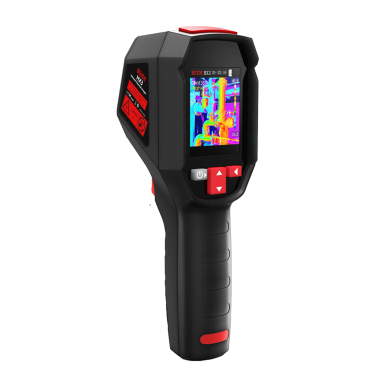
# Infrared Thermometer: Accurate Non-Contact Temperature Measurement
## What is an Infrared Thermometer?
An infrared thermometer is a device that measures temperature from a distance by detecting the infrared energy emitted by an object. Unlike traditional thermometers that require physical contact, infrared thermometers provide a non-invasive way to measure temperature, making them ideal for various applications.
## How Does an Infrared Thermometer Work?
Infrared thermometers operate based on the principle that all objects emit infrared radiation as a function of their temperature. The device consists of:
– A lens to focus the infrared energy
– A detector that converts the energy into an electrical signal
– Electronics that process the signal and display the temperature
The thermometer measures the infrared radiation coming from the object’s surface and calculates the temperature based on the intensity of this radiation.
## Key Features of Infrared Thermometers
Modern infrared thermometers offer several important features:
– Non-contact measurement
– Fast response time (typically less than 1 second)
– Wide temperature range (-50°C to 3000°C depending on model)
– Adjustable emissivity settings
– Laser targeting for precise measurement
– Data logging capabilities (in advanced models)
## Applications of Infrared Thermometers
Infrared thermometers have found widespread use in numerous fields:
### Medical Applications
In healthcare settings, infrared thermometers are commonly used for:
– Measuring body temperature without contact
– Screening for fever in public places
– Monitoring patients without disturbing them
### Industrial Uses
Industries utilize infrared thermometers for:
– Monitoring equipment temperature
– Detecting overheating components
– Quality control in manufacturing processes
– Preventive maintenance
### Food Service
Restaurants and food processing plants use them for:
– Checking food temperatures without contamination
– Monitoring refrigeration units
– Ensuring proper cooking temperatures
## Advantages of Infrared Thermometers
The non-contact nature of infrared thermometers provides several benefits:
– Reduced risk of cross-contamination
– Ability to measure moving or hazardous objects
– Fast measurements for increased efficiency
– Safe measurement of extremely hot or cold surfaces
– Non-destructive testing capability
## Choosing the Right Infrared Thermometer
When selecting an infrared thermometer, consider these factors:
– Temperature range needed for your applications
– Required distance-to-spot ratio
– Emissivity adjustment capability
– Response time requirements
– Additional features like data logging or alarms
– Environmental conditions where it will be used
## Proper Use and Maintenance
To ensure accurate measurements:
– Keep the lens clean and free from scratches
– Store the thermometer in a protective case
– Avoid extreme temperature fluctuations
– Regularly calibrate according to manufacturer instructions
– Use appropriate emissivity settings for different materials
## Future Developments in Infrared Thermometry
The field continues to evolve with:
– Improved accuracy and resolution
– Integration with smart devices and IoT systems
– Advanced imaging capabilities
– Smaller, more portable designs
– Enhanced data analysis features
Keyword: infrared thermometer
Infrared thermometers have revolutionized temperature measurement across multiple industries, offering a safe, efficient, and accurate alternative to traditional contact thermometers. As technology advances, we can expect even more sophisticated applications and features in these versatile devices.